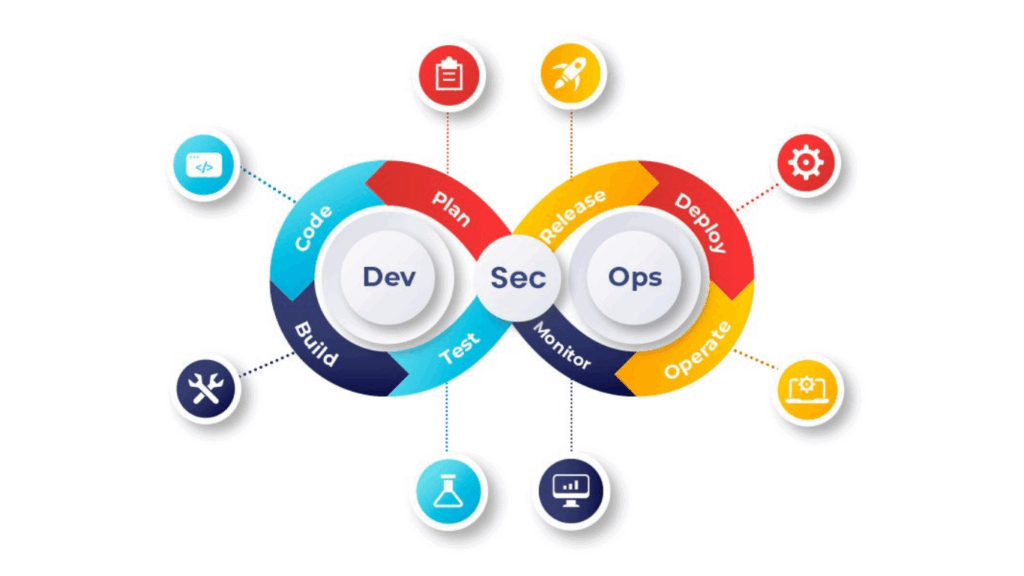Quality assurance is a technique of testing and monitoring a product to make sure that the finished product is created without defects. In physical manufacturing, QA testing may include failure testing, statistical testing control and other industry-specific practices.
Many of the people get confused when it comes to quality assurance and quality control and testing. The differences that can be noted are:
Quality Assurance- These activities include and make sure the implementation of processes, procedures and standards in context to validation of developed software and intended requirements. Focuses on processes and procedures rather than conducting actual testing on the system. It is a process oriented activities.
Quality Control- This includes the activity that makes sure the verification of developed software with respect to documented requirements. This focuses on actual testing by executing the software with an aim to spot bug/defect through the implementation of procedures and process. It is a product oriented activities.
Testing– It includes an activity that makes sure the identification of bugs/error/defects in a software. Focuses on the actual testing. It has product oriented activities.
What are the best practices of QA testing?
- Test one thing at a time: tests should have clear objectives. Each test should specialise in a feature or check out things like interface or security.
- Understand the types of testing on offer- There are lots of different types of tests from load testing to user acceptance testing (UAT)- so make sure you understand the differences and how to use them.
- Use regression tests- Testing a main feature once isn’t enough. New additions to the code repository can interfere with features that previously passed tests.
- Report and track bugs- Determine how bugs will be reported and what kind of data is needed. Will you use an open-source bug tracking tool or build one’s specifically suitable for workflow.
- Leverage analytics- Decide which QA metrics to find. It keeps records of every test conducted and uses this data to determine where bugs are likely to occur. This data will assist you to develop new tests that address problem areas.
- Choose the right environment for tests- we should try to cover a wide range scenarios, including different devices, OS and user profiles.
- Use unit and integration tests-Unit testing will isolate each component of your app while assess how well each subsystems work. Run unit tests in parallel to save time, but don’t move onto integration tests until you have made sure that individual components work.
Including the agile methodology into software testing
Agile methodology makes sense in the context of developing mobile apps given that these products typically have short development cycles and mobile users have extremely high expectations regarding functionality, quality and frequent updates. With these agile methodologies, QA testing is a part of the design and development processes than being a separate phase. The test results are included directly into the design and development processes and quality becomes a guiding principle.
This is a collaborative approach that needs designers, developers, the QA team and sometimes even users to speak or work together. In order to facilitate collaboration you can use a single repository for the app code.






























26 Responses
Quality Assurance makes sure that the finished product is without any defects by testing and monitoring it. It mainly focuses on process and procedures. It is a process oriented activity.
The best practices of Quality Assurance Testing are,
Testing one thing at a time.
Understand different types of testing.
Report and track bug.
Choosing right environment for testing.
Quality assurance is a testing technique and monitoring a product to make sure that the finished product is created without defects. we also have to know about the difference of quality assurance and quality control. quality control is product oriented verification method whereas quality assurance is a process oriented validation method.
The best way of using QA Testing is testing one thing at a time, understanding the testing types, use regression testing, report and track bugs, choosing right environment for testing, using unit and integration testing.
These days Quality is assured by following a new methodology called agile methodology. In this agile methodologies, QA testing is a part of the design and development processes than being a separate phase. The test results are included directly into the design and development processes and quality becomes a guiding principle.
Quality Assurance is a way of preventing mistakes and defects in manufactured products and avoiding problems when delivering products or services to customers. It is a process oriented activities.
Quality Assurance is the process of testing software to a make sure it is without bugs/defects. It focuses mainly on the process and procedures not just testing. Quality Control is a product based testing through proper documentation to test for the complete software. Testing is simply to testing.., making sure everything is without bugs, errors, and or defects.
Quality assurance technique is used to test and monitor a product to make sure that the finished product is created without defects. Quality Assurance includes the activities that focuses on processes and procedures rather than conducting actual testing on the system. It is a process oriented activities. Agile methodology makes sense in the context of developing mobile apps given that these products typically have short development cycles and mobile users have extremely high expectations regarding functionality, quality and frequent updates.
QA includes activities like processes, procedures and standards that need to followed during sdlc while quality control includes the activity that makes sure the verification of developed software.
Quality Assurance- These activities include and make sure the implementation of processes, procedures and standards in context to validation of developed software and intended requirements. Focuses on processes and procedures rather than conducting actual testing on the system. It is a process oriented activities.
Quality Control- This includes the activity that makes sure the verification of developed software with respect to documented requirements. This focuses on actual testing by executing the software with an aim to spot bug/defect through the implementation of procedures and process. It is a product oriented activities.
Testing– It includes an activity that makes sure the identification of bugs/error/defects in a software. Focuses on the actual testing. It has product oriented activities.
Quality Assurance makes sure that the finished product is without any defects by testing and monitoring it. It mainly focuses on process and procedures. It is a process oriented activity.
The best practices of Quality Assurance Testing are,
Testing one thing at a time.
Understand different types of testing.
Report and track bug.
Choosing right environment for testing.
Quality assurance (QA) is any systematic process of determining whether a product or service meets specified requirements. QA establishes and maintains set requirements for developing or manufacturing reliable products
Quality assurance is a technique of testing and monitoring a product to make sure that the finished product is created without defects. In physical manufacturing, QA testing may include failure testing, statistical testing control and other industry-specific practices.
The best practices of QA testing :
1. Test one thing at a time: tests should have clear objectives. Each test should specialize in a feature or check out things like interface or security.
2. Understand the types of testing on offer- There are lots of different types of tests from load testing to user acceptance testing (UAT)- so make sure you understand the differences and how to use them.
3. Use regression tests- Testing a main feature once isn’t enough. New additions to the code repository can interfere with features that previously passed tests.
4. Report and track bugs- Determine how bugs will be reported and what kind of data is needed. Will you use an open-source bug tracking tool or build one’s specifically suitable for workflow.
5. Leverage analytics- Decide which QA metrics to find. It keeps records of every test conducted and uses this data to determine where bugs are likely to occur. This data will assist you to develop new tests that address problem areas.
6. Choose the right environment for tests- we should try to cover a wide range scenarios, including different devices, OS and user profiles.
7. Use unit and integration tests-Unit testing will isolate each component of your app while assess how well each subsystems work. Run unit tests in parallel to save time, but don’t move onto integration tests until you have made sure that individual components work.
Testing is an activity carried out to identify bugs/defects. it also verifies compliance with clients requirements.
Best Practices for Testing:
Test one thing at a time. Each testing should have clear objectives, specialize on a feature e.g security or interface.
Quality assurance which defines the process, procedure,
controls, standards, audits that need to be followed throughout SDLC
Quality control is the actual testing process verifying the deliverables.
Test one thing at a time. Test should have clear objective.
Understand type of testing.Use regreesion testing.
Defect reporting and tracking.
Choose the right environment for testing.
Use unit and integration testing.
Quality assurance (QA) is any systematic process of determining whether a product or service meets specified requirements. QA establishes and maintains set requirements for developing or manufacturing reliable products.
Examples of quality assurance activities include process checklists, process standards, process documentation and project audit. Examples of quality control activities include inspection, deliverable peer reviews and the software testing process.
Quality Testing is a technique of testingor the process of monitoring a product to ensure the finished product is released without any defects.This process will include failure testing,statistical testing controland other practices.
Quality assurance is a technique of testing and monitoring a product to make sure that the finished product is created without defects and you can conduct analytics and identify bugs
Effective Quality Assurance (QA) Testing reveals errors and inconsistencies that can affect the real-world use of the software being developed. When QA testing is done correctly, it ensures product longevity while saving companies time and money. QA includes activities like processes, procedures and standards that need to follow during SDLC while quality control includes the activity that makes sure the verification of developed software as per the documented requirements.
Quality Assurance is to identifying the defects/bugs in the software and verify the compliance of the software with the client requirements.
Quality assurance is a process oriented activity which verifies that the product being developed is the right one and aims at preventing defects
Quality Control is a product oriented activity which validates that the product developed is right one and aims at finding & fixing defects.
Quality Assurance is the type of testing to monitor the product is defect free or not.In Quality assurance we monitor the implementation of process and procedure in developing the product are right in context to the requirement of the customer. It is process oriented method of testing.
Quality control is the method of testing where we actually runs the application to check weather its defect free or not. It is product oriented method.
the best practices of testing are
1.prefect environment
2.test single thing in a time.
3.know the types of testing
4.tracking of bugs
5.regression testing
Quality assurance is a technique of testing and monitoring a product to make sure that the finished product is created without defects. In physical manufacturing, QA testing may include failure testing, statistical testing control and other industry-specific practices.
QA: It is preventive technique that focuses on making sure that the developed software is quality product and aligns with the intended requirements of the client. It does not involves executing the program and lays more emphasis on the process. It includes the entire SDLC life cycle.
QC: It is a corrective process that focuses identifying bugs/errors/defects and improving them. It involves actual testing of the software. It comprises of STLC life cycle or testing phase of SDLC cycle and is a product-oriented technique.
Testing: It means identifying defects in the software and verify the compliance of software with the client’s requirement.
QA a technique of testing a software developed for any the defects and bugs and compliance of it as per client requirements. Quality assurance and quality control are different concepts where QA is process oriented and focus on the process and procedures of testing, quality control is more product oriented and make sure to verify the final product comply with client’s requirements.
QA testing practices need to focus on some points like-
-testing one thing at a a time and understanding the type of testing like-which case need what type of testing.
-using Regression and unit and integration testing.
-tracking and reporting bugs etc.
Quality assurance is a technique of testing and monitoring a product to make sure that the finished product is created without defects. These activities include and make sure the implementation of processes, procedures and standards in context to validation of developed software and intended requirements. It focuses on processes and procedures rather than conducting actual testing on the system. Quality assurance is a process oriented activities. It includes best practices such as testing one thing at a time, understanding the types of testing on offer, using regression tests, reporting and tracking bugs, leveraging analytics, choosing the right environment for tests, using unit and integration tests. It is a collaborative approach that needs designers, developers, the QA team and sometimes even users to speak or work together.
Quality assurance is a technique of testing and monitoring a product to make sure that the finished product is created without defects. Many people get confused with quality assurance, quality control and testing. The differences are
QA- Focuses on processes and procedures rather than conducting actual testing on the system. It is a process oriented activities.
QC- Focuses on actual testing by executing the software with an aim to spot bug/defect through the implementation of procedures and process. It is a product oriented activity.
Testing- It includes an activity that makes sure the identification of bugs/errors/defects in a software. Focuses on the actual testing. It has product oriented activities.
Best practices in QA are
Test one thing at a time. Tests should have clear objectives. Each test should specialise in a feature or check out things like interface or security.
Understand the types of testing on offer
Use regression tests
Report and track bugs
Leverage analytics
Choose the right environment for tests
Use unit and integration tests